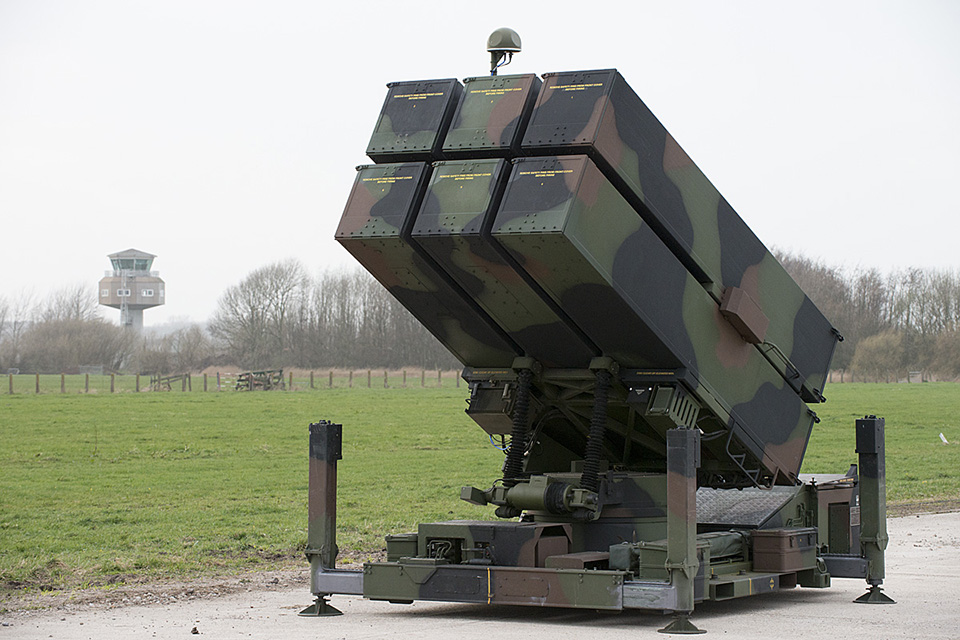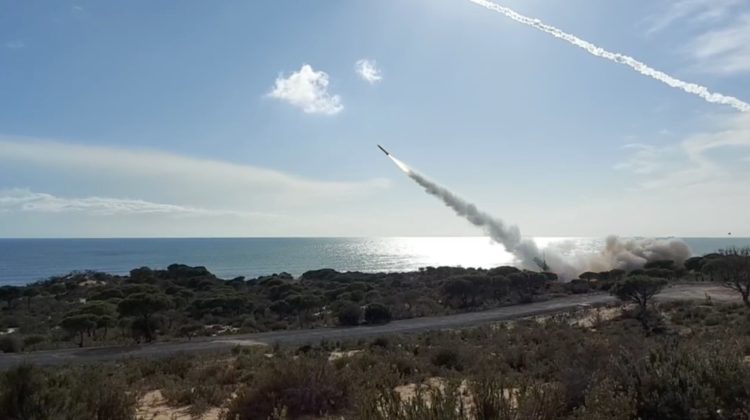According to Reuters, Austin said US-supplied NASAMS air defense systems in Ukraine had intercepted every Russian missile, suggesting 100% success.
U.S. Defense Secretary Lloyd Austin, speaking at the start of a routine virtual meeting of dozens of defense ministers about Russia’s invasion of Ukraine, said that the United States and Poland would work together to gather more information about the explosion, but he did not assign blame.
On the other hand, NATO officials said an errant Ukrainian air defense missile likely caused an explosion in Poland on Tuesday.
The National Advanced Surface-to-Air Missile System (NASAMS) is a ground-based air defense system. The system is designed to protect an area from all types of aerial threats, including aircraft, cruise missiles, and unmanned aerial vehicles.
The NASAMS was first developed in the 1980s as a substitute for the Nike Hercules missile system. The first version of the NASAMS was deployed in Norway in 1995. In addition, the NASAMS has been exported to several countries, including Finland, Spain, and the United Arab Emirates.

The NASAMS is a modular system that can be adapted to meet the specific needs of each army. The system consists of three main components: launchers, radars, and command and control systems. The launchers can be mounted on trucks or trailers, and the radars can be mounted on either trucks or stationary platforms. The command and control systems are used to monitor and control the launchers and radars.
The NASAMS uses advanced radar technology to detect aerial threats. The radar can track targets over a range of 120 miles. The radar can also distinguish between friendly and enemy aircraft.
The NASAMS is equipped with AIM-120 AMRAAM air-to-air missiles. The AMRAAM is a medium-range missile that can be fired at targets up to 65 miles away. The missile has a range of Mach 4 and can hit targets moving at speeds up to 500 mph.
Ukraine’s Defense Against Iranian Kamikaze Drones
Since the deployment of the NASAMS, the system has been successfully used to defend against a number of aerial threats, including aircraft, cruise missiles, and unmanned aerial vehicles. In recent years, however, the NASAMS has come under increased threat from Iranian kamikaze drones.
Kamikaze drones are small, unmanned aircraft armed with explosives and programmed to crash into a target. The Iranian military began using kamikaze drones to bypass traditional air defense systems. The first successful use of a kamikaze drone by the Iranian army was when a drone was used to attack an oil refinery in Saudi Arabia.
Unconfirmed #Azerbaijan use of #Israel Harop #UCAV/loiter munition #Armenia #NagornoKarabakh https://t.co/xTVS8VRsJ4 pic.twitter.com/kfxT5QlXwW
— Joseph Dempsey (@JosephHDempsey) April 5, 2016
Since then, the Iranian military has continued to increase its use of kamikaze drones, with attacks targeting both military and civilian targets. In addition, Iranian drone instructors have reportedly been seen arriving in Crimea. For Iran, these drones could be the backbone of their army.
“Iran developed its missile and drone program to compensate for the lack of an effective air force,” said Hamidreza Azizi, German Institute for International and Security Affairs. He also added that “indigenous development started to take precedence in Iran’s military thinking.”
The increasing use of kamikaze drones by the Iranian military previously presented a significant challenge for air defense systems like the NASAMS. Kamikaze drones are small and difficult to detect, and they can travel at high speeds and deliver many explosives. As a result, they can inflict significant damage on targets like airports and oil refineries.
In the past 13 hours, #UAarmy shot down 37 Iranian Shahed-136 drones and 3 cruise missiles launched by russian terrorists.
— Defense of Ukraine (@DefenceU) October 17, 2022
The increasing use of Kamikaze Drones by Iran presents a significant challenge for air defense systems like NASAMS because they are difficult to detect due to their size, high speed, and capacity for delivering explosives. However, despite this challenge, the NASAMS are now proven effective against Kamkazie Drones.










COMMENTS
You must become a subscriber or login to view or post comments on this article.